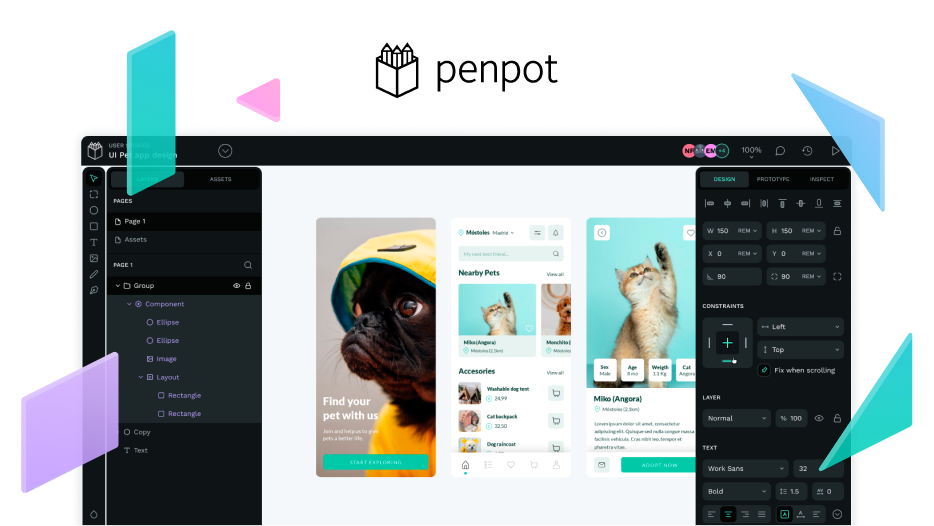Designers have long contributed to open-source projects, but their contributions often go unnoticed or undocumented.
In a recent study titled: “The Secret Life of Open Source Designers,” researchers Nimisha Vijay (user experience designer at Nextcloud) and Eriol Fox (open source product manager at Superbloom and PhD researcher at Newcastle University) explored the world of design contributions in open-source projects.
As soon as we got hold of that research, we couldn’t wait to dive in. We invited them to our podcast Open Chat with Penpot to find out more, and here’s what we learned!
You can also listen to this interview on Peertube and, if you’re into podcasts, enjoy it on iVoox and Spotify.
One of the big topics discussed in this chat was the slowness of the design process. Nimisha attributed it to factors such as volunteer-led initiatives, software diversity, and technical limitations. She also highlighted the lack of feedback and information about priorities as major challenges for designers in the collaborative world of Open Source.
The question is simple: How do open-source projects better signal to the community what is a priority to work on?
“Designers love feedback. They’d like to know: Are there things that I need to change? Actionable priorities would be super helpful to anyone new”, said Nimisha.
The power differential between designers and developers
The study also revealed a power differential between designers and developers, particularly in open source. Developers own and hold so much more power, leaving designers feeling excluded and unsure of who to speak to or how to get involved.
“We got a lot of information from designers about feeling excluded (GitLab is confusing and the team did not put me as a developer yet), not knowing how to get involved with these cliques,” explained Eriol.
To encourage more designers to contribute to open-source projects, @diacritica, suggests creating a design process that prioritizes collaboration, community building, and co-ownership.
“I’m more into less surprises and more support and co-ownership. I don’t want to make people feel privileged because they have access to something. I want people to feel privileged perhaps because they belong to a community that respects their ideas and they own a bit of the product for real. That’s the community with a capital C in my book,” Pablo remarked.
How can we ensure community engagement?
Unlike what happens in Penpot, following Eriol’s discoverings: "The place where the open source is, is not where the design happens”. Of course, tools play a key role in shaping designers’ contributions to open-source projects.
At Penpot, we differentiate between user and contributor personas to simplify research and ensure community engagement. This approach allows for different types of contributions, not just visual designs, from designers and developers alike.
“The ratio at Penpot between designers and developers is not one to two (compared to the case scenario is one to ten). That explains how we approach our own roadmap and different priorities. A, don’t feel lonely, B, feel understood and respected, and they now enjoy the next level of collaboration,” said Pablo.
Design process for better collaboration
A new question jumped into the conversation: How to encourage more designers to contribute and ensure their contributions are valued and respected?
“If there were designers as maintainers, probably there will be more information upfront and some process to deal with” Eriol shared. “I would like designers to say that one of the things they look for to contribute to a particular project is that there is a design process".
Simplifying the design process and facilitating faster feedback and collaboration will help bridge the gap between designers and developers.
The chat finished with Pablo’s invitation: “Everyone should go to the Superbloom page, take the PDF, and enjoy the reading”.


